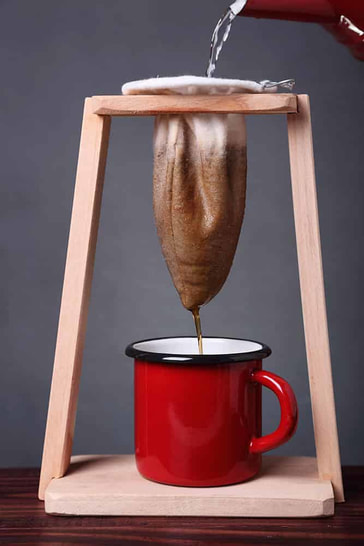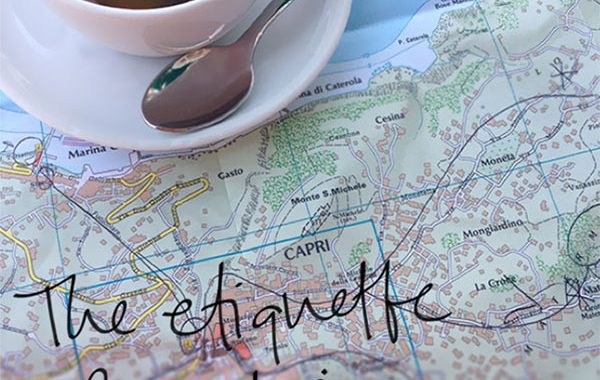
I moved to Australia almost ten years ago, and I still can remember the first day I tried to order a takeaway coffee, I said: “A medium coffee with milk, please” and the barista looked at me and asked: “so, would you like a flat white, a latte or a cappuccino?” – How many options for a coffee with milk?!
Looking back at that moment I realised that coffee is drunk very differently around the world; from the roasting to the extraction, brewing, or even it’s cultural meaning. We all have our ways of sipping that delicious brown-coloured beverage that fills us with joy.
Being part of Lucaffe for the last 3 years has given me the opportunity to learn so much about coffee. I got curious and decided to do some research on how different countries around the world make, drink and view coffee within their culture.
Coffee in ITALY
“Prendiamo un caffé” (let’s get a coffee)
Italy is the home of coffee and of course where all of our Lucaffe coffees are roasted. Once you are at the bar you can order “Un caffé per favore” (a coffee, please). This will get you an espresso – a small but strong shot of coffee – extracted through an espresso machine. Italians generally prefer their coffee blends high in Robusta beans, giving the coffee a strong taste with a slightly bitter finish.
You could also order a “doppio” coffee, which is 2 shots of espresso. With Italians, however, this is not as common, because if you need that extra kick: why not visit your barista multiple times a day?! – In Italy, coffee is typically enjoyed “al banco” (at the bar) so you would stand and chat while having your coffee.
Of course, Italians have a few variations that are based on espresso shots to mix it up.
caffé macchiato: which is an espresso shot with milk foam (macchiato means stain).
caffé latte: an espresso shot with stretched milk – funnily enough, if you order just a latte in Italy you will get a cup of warm milk!
caffé corretto” (corrected coffee) which features an espresso shot with a splash of alcohol, such as grappa or sambuca.
Coffee for Italians is a social experience, it is meant to be enjoyed with friends and in small doses, therefore asking for a takeaway coffee cup is almost non-existent.

Coffee in AUSTRALIA
Here in Australia, the vast majority of coffees are based on espresso as well, but we do like our milk with it. The most common styles of coffee that you can order at a coffee shop in Australia are short black (basically an espresso), long black, flat white, latte, cappuccino and mochaccino. If you would like to read further into these styles, our last blog features them all!
I have also learned that Australians are not shy when it comes to experimenting with different ways of brewing coffee. I have had drip coffee, a method of brewing your ground coffee through a filter – a great way to do it is with a Chemex. Another recently popular way of having coffee in Australia is cold brew, this way of extracting coffee is delicious and smooth, especially when it is summer and the temperature starts to rise.
Coffee in VENEZUELA
Venezuela is where I was born (a little fun fact for you!). In the early 1700s, Venezuela started its coffee production and by the mid-1800s it was the third-largest producer of coffee in the world. Unfortunately, in 2003, the Government of Venezuela introduced policy regulations (fixing procurement price limits) on growing coffee which restricted the production of coffee in the country.
Venezuelan coffee is mostly drunk black. When Venezuelans have guests at home they would normally offer their visitors a guayoyo. Guayoyo (or Colao’ as my grandmother would call it) is a very traditional method of making coffee. It is coffee filtered through a cotton cone-shaped cloth (that looks like a sock) and is sewn to a metal frame. The water and coffee ratio is around 80g of coffee for a litre of water, but of course, this would depend on the consumer. Some like it stronger than others and use the same method of extraction, but with more coffee. We call this a little black.
Most Venezuelans like their coffee sweetened with sugar, but it is all about personal preference. But don’t worry if you like your coffee with milk you can still order cappuccinos and flat white style coffees or “marroncito” (little brown) from your local coffee shop. A Quick Spanish lesson for you: for some strange reason, we Venezuelans tend to refer to things and make a diminutive out of it – Adding “ito” as a suffix to most words makes them small haha!

Coffee in IRELAND
Irish coffee is surely a very popular style of coffee known worldwide nowadays. In fact more than a coffee, it qualifies as a cocktail. An Irish coffee is a hot coffee with a shot of Irish whiskey served in a glass Irish coffee mug, then topped with cream.
It is said that the Irish coffee was invented by Joseph Jackson from County Donegal who whilst fighting in World War II made the drink in an effort to keep his fellow comrades awake through the night under attack from German soldiers. But there are many theories of how it was invented so don’t take my word for it.
Around 1980 the first coffee shop was opened in Belfast by a returning emigrant from Canada, at the time Friends and Sex and The City was on TV so that style of “coffee shop” feel was adopted and to everyone’s surprise, the store was an overnight success. Over the last 30 years, Irish people have adopted the American style of coffee with milk and flavour syrups.
Coffee in TURKEY
Turkish coffee is a great, different way to brew your cup of this delicious hot beverage. The coffee is very finely ground and brewed in a Turkish coffee pot known as an “Ibrik” or “Cezve”. It is simmered over the lowest heat or, traditionally, simmered on hot sand. The reason the coffee beans are ground so finely is that the grounds are not filtered, but kept in the cup you drink from. If you’d like sugar with your Turkish coffee remember to ask beforehand as they brew the coffee with sugar, not added after. Cardamom is often added to the coffee too, delicious!
In Turkey, coffee is part of a traditional wedding custom. Traditionally the groom’s parents visit the bride’s family to ask for her hand. During this meeting the bride serves coffee for the guests. Funnily enough, the bride-to-be prepares the groom’s coffee with salt instead of sugar. If the bridegroom drinks his coffee without any sign of displeasure, she assumes that the groom is good-tempered and patient. Now, how is that for a tradition and pre-marriage testing haha!

